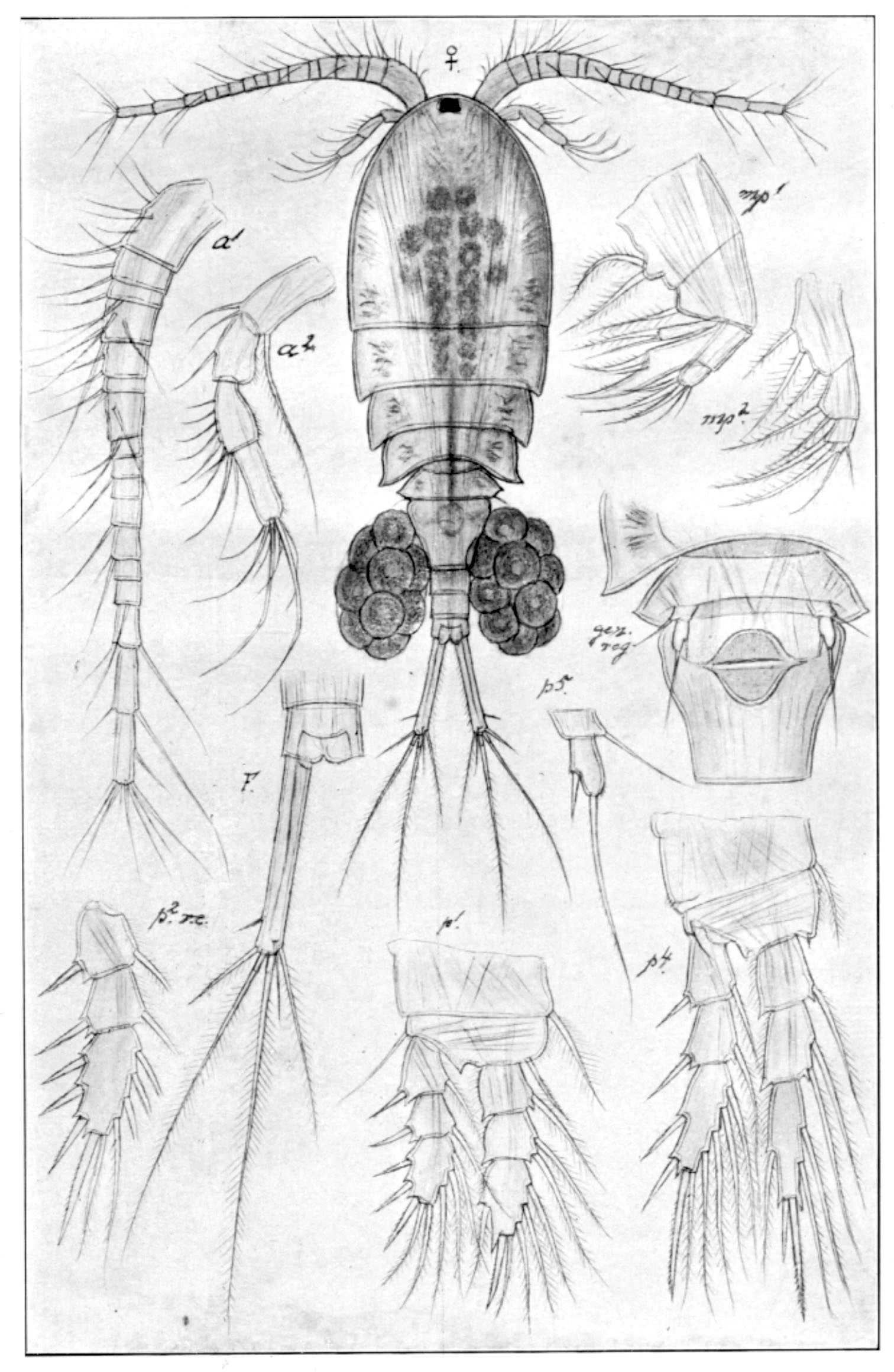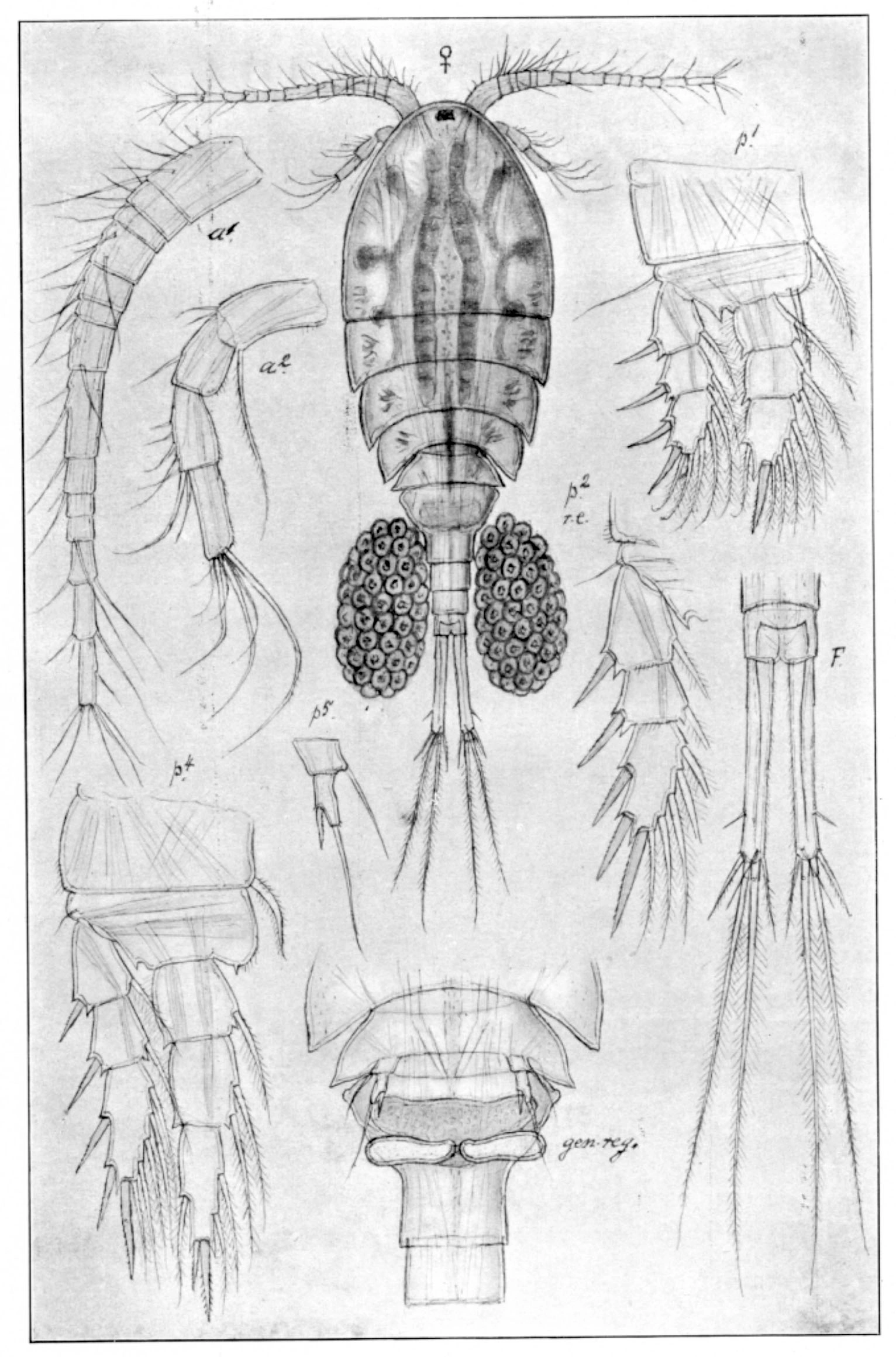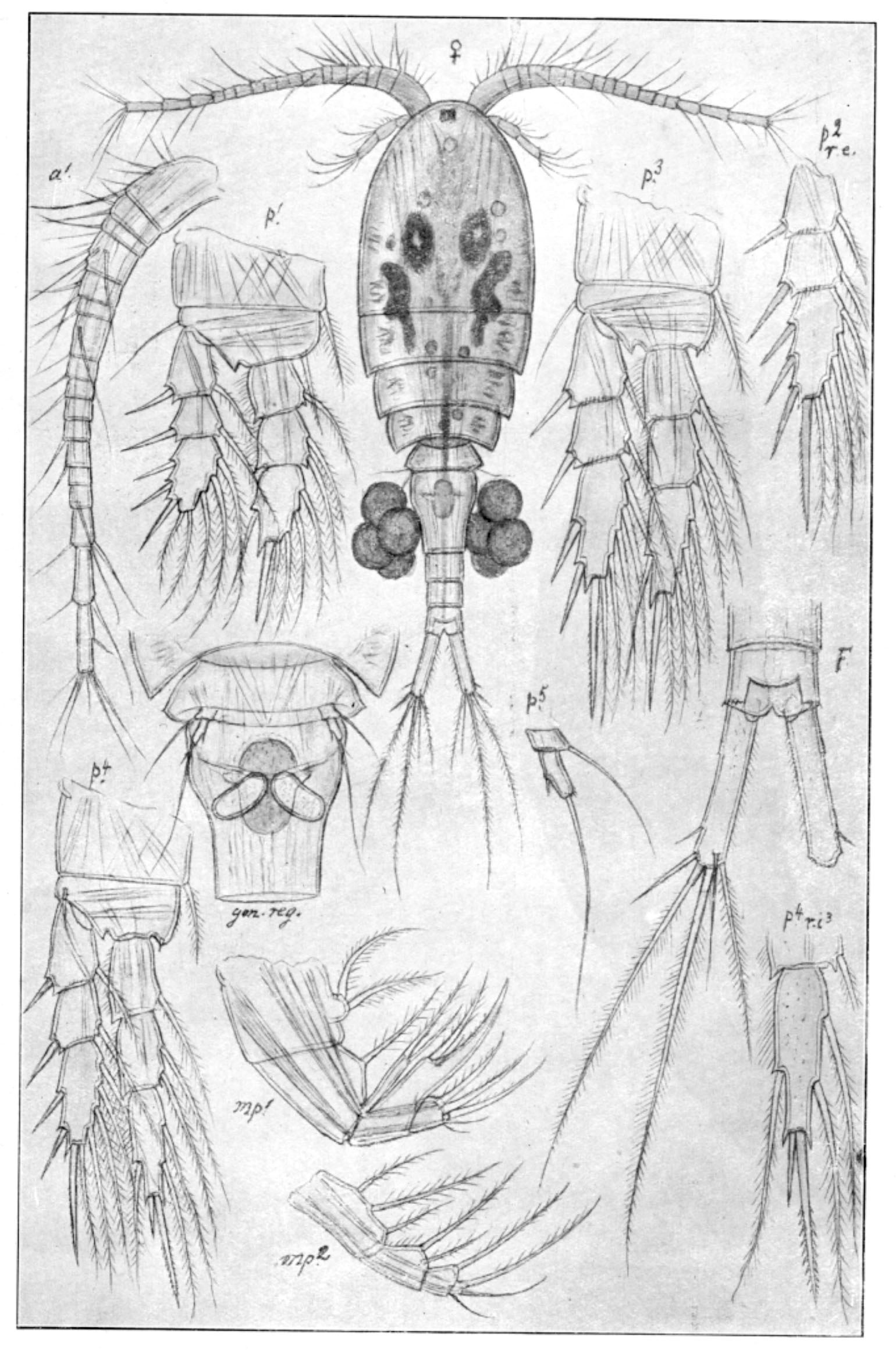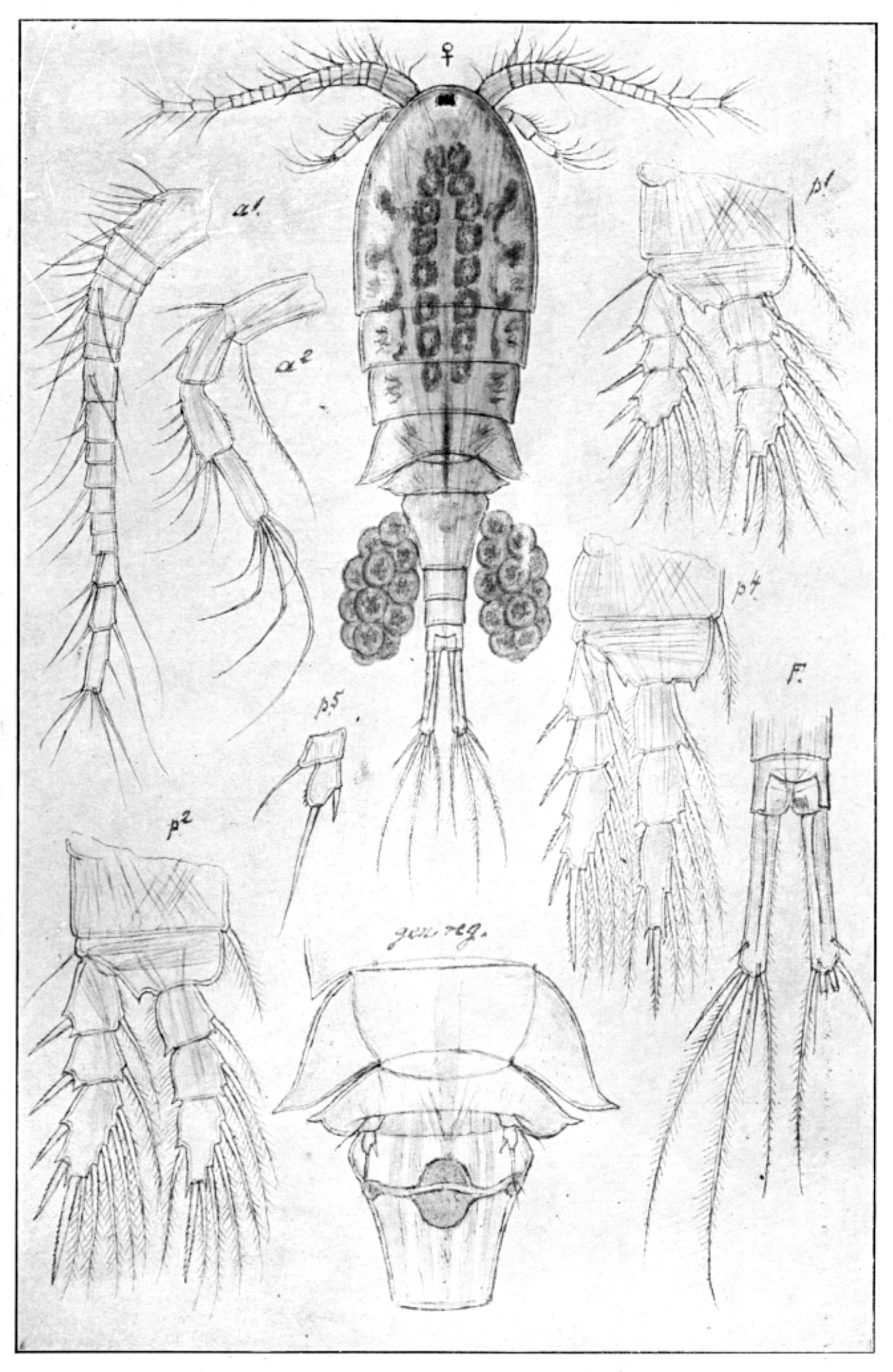Cyclops strenuus
Cyclops strenuus is most abundant in early spring or late autumn, and may occur both in ponds with extremely high loads of nutrients as well as in the littoral of large lakes. It generally has a light yellow or orange colour.
Key characteristics
Cyclops strenuus (female)
With respect to the body shape, C. strenuus is representative for the genus Cyclops. It may resemble C. scutifer, but can be distinguished from this species by the appearance of the 4. and 5. thorax segment, which is less pointed in C. strenuus. Their furca is of the same length and is shorter than i.e. the tails of C. abyssorum and C. insignis. A criterion to separate C. strenuus from C. scutifer is also to use the seta attached to the 1. basal joint in the 4. pair of legs which is much thinner in C. strenuus than in C. scutifer. C. strenuus generally has a light yellow or orange colour.
Female: Length 1.2–2.3 mm
Male: Length 1.1–1.8 mm
Ecology and distribution
C. strenuus occurs in the plankton as well as in the littoral, and is found in about 3 % of the water bodies which all are situated below 500 m a.s.l. Except for a few localities, the majority of records are from small ponds. It is associated with neutral (pH 6.0–8.0), electrolyte rich localities and may occur in ponds with extremely high loads of nutrients. The species is obviously more abundant than our records tell us, since it is abundant in early spring or late autumn, which is before or after the great majority of water bodies are sampled.
| Vitenskapelig navn | < 4,5 | 4,5 - 4,9 | 5,0 - 5,4 | 5,5 - 5,9 | 6,0 - 6,4 | 6,5 - 7,0 | 7,0 - 7,4 | > 7,5 |
|---|---|---|---|---|---|---|---|---|
| 0 | 0 | 0,4 | 0,7 | 1,2 | 3,1 | 4,5 | 16,9 |
| Vitenskapelig navn | < 1,0 | 1,0 - 1,4 | 1,5 - 1,9 | 2,0 - 2,9 | 3,0 - 3,9 | 4,0 - 4,9 | 5,0 - 6,9 | 7,0 - 9,9 | > 10,0 |
|---|---|---|---|---|---|---|---|---|---|
| 0 | 0,4 | 0 | 0 | 0 | 1,7 | 0,8 | 8,9 | 22,7 |
| Vitenskapelig navn | < 0,01 | 0,01 - 0,09 | 0,1 - 0,9 | 1,0 - 9,9 | 10,0 - 99 | 100 - 999 | > 1000 |
|---|---|---|---|---|---|---|---|
| 0 | 23,5 | 3,5 | 1,8 | 1,3 | 0,9 | 3,9 |
| Vitenskapelig navn | < 100 | 100-299 | 300-499 | 500-699 | 700-999 | >1000 |
|---|---|---|---|---|---|---|
| 4,3 | 5,3 | 1,7 | 0 | 0 | 0 |





